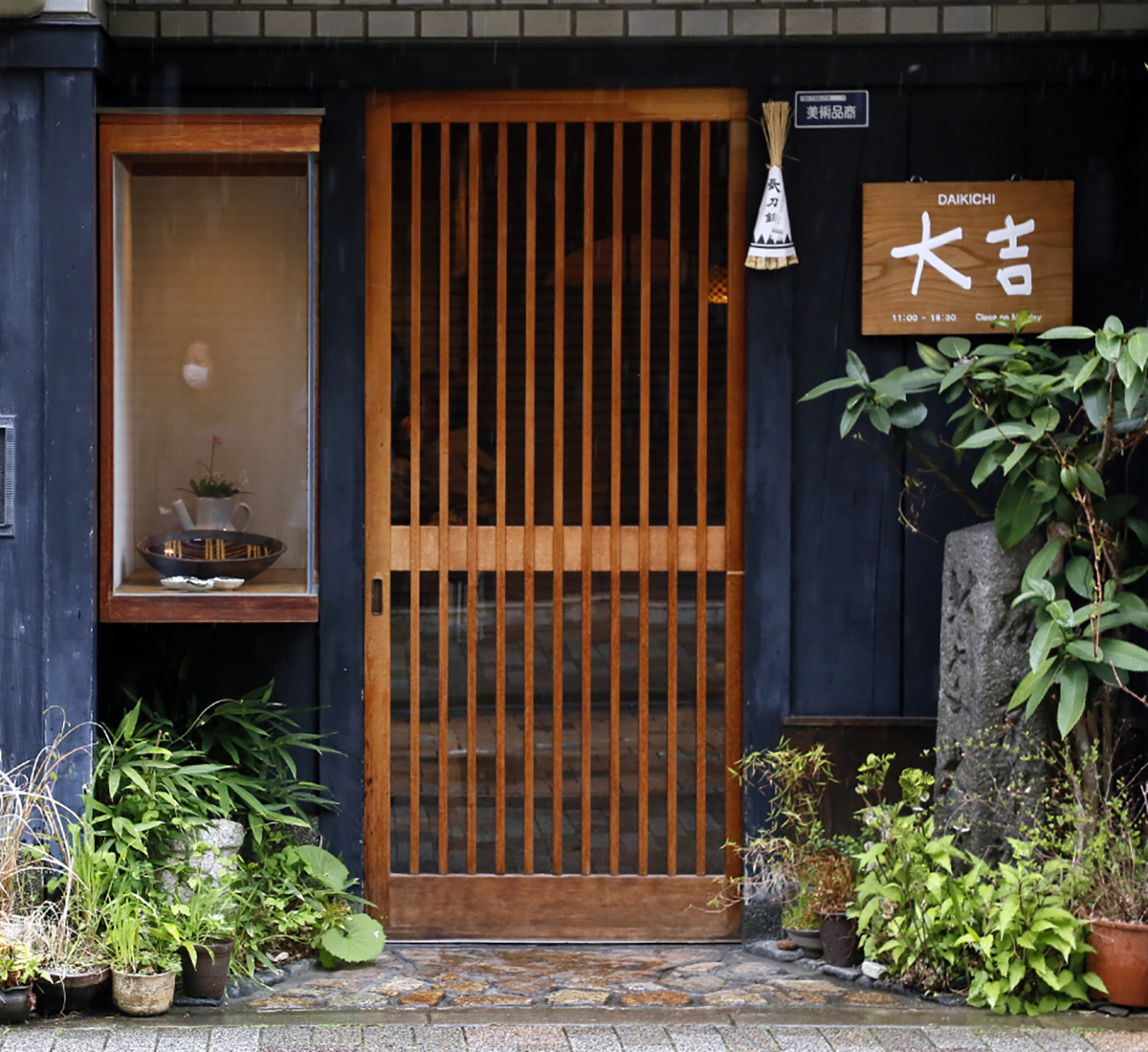DAIKICHI
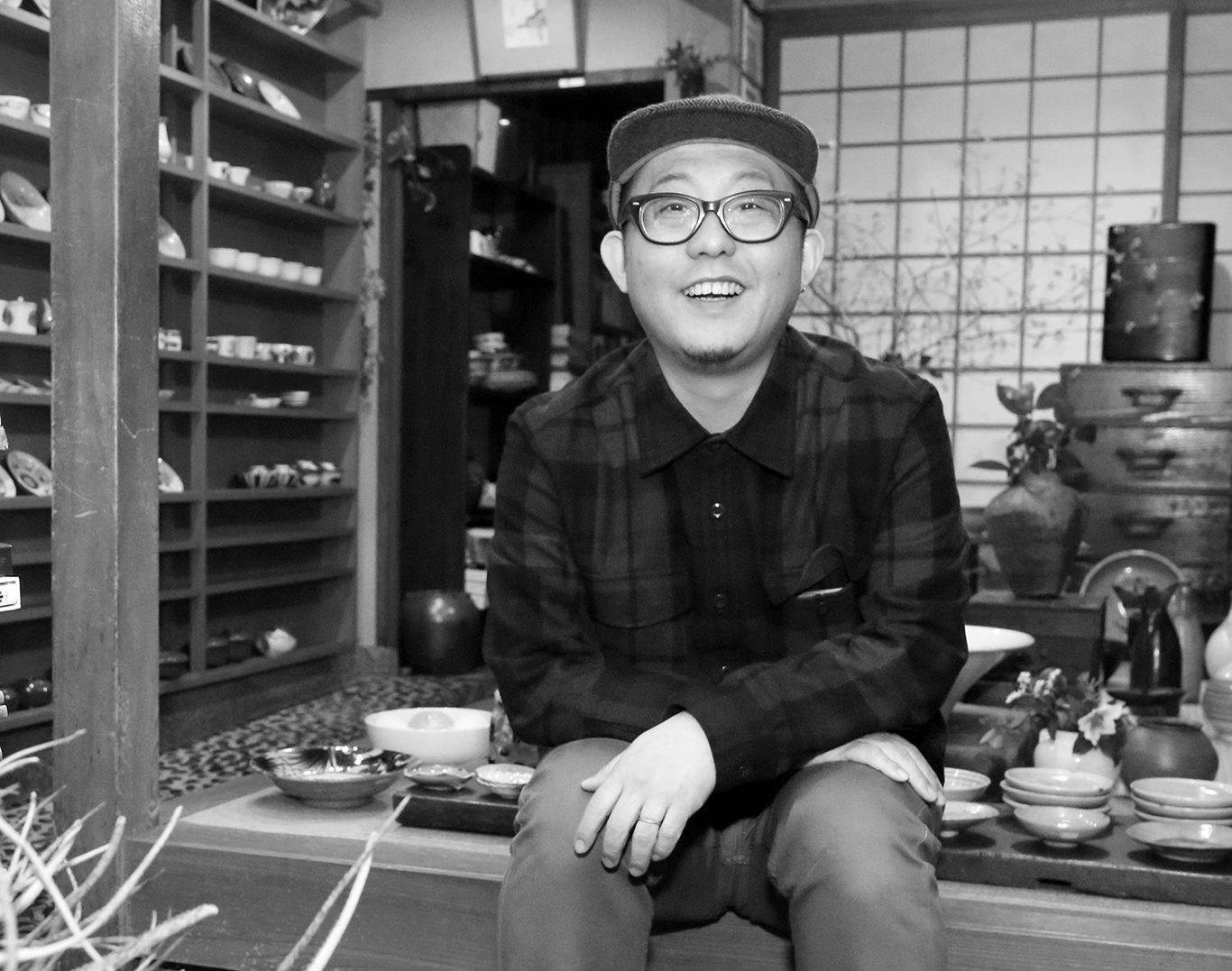
Friendly Antique Shop with the scent of coffee
“I learned the luxury of ‘daily usage’ in America.”
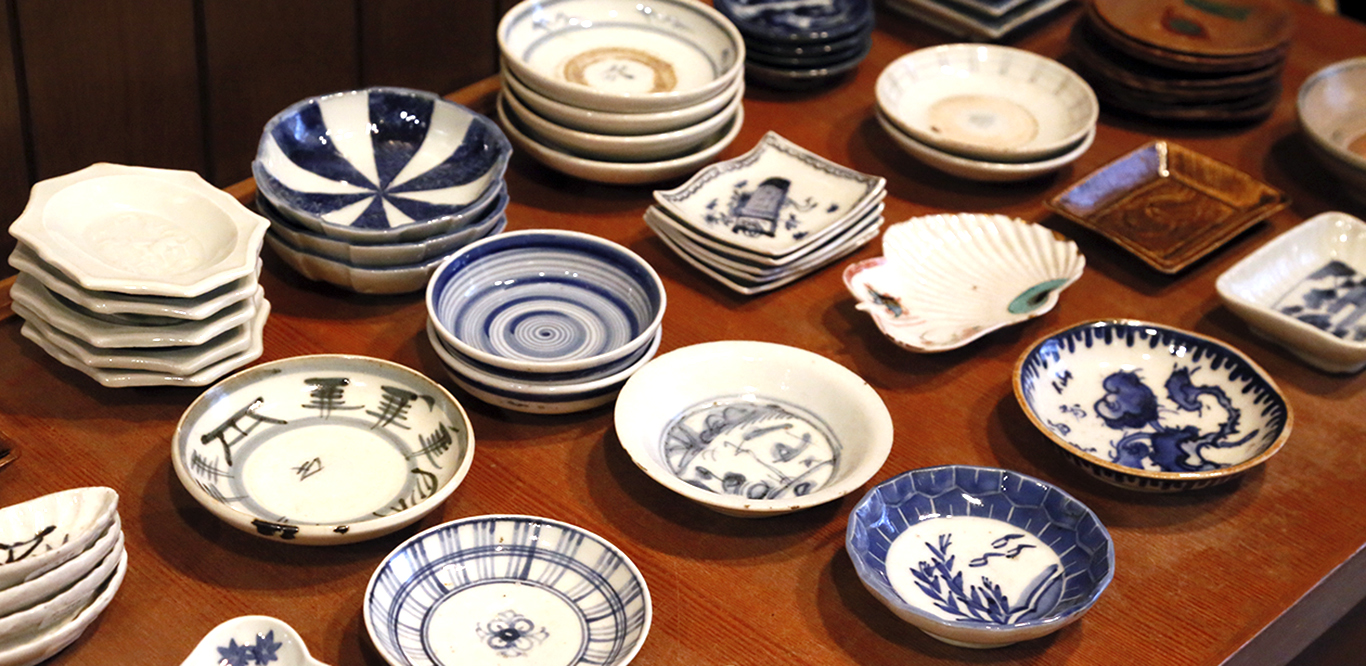
If you learn about the origin, you will understand more deeply
The shop is located at the corner of Teramachi-Nijo. From the modest sized door, you could see regular customers drinking coffee at the counter table. Behind the counter are many antique pieces. Although many antique stores do not accept first time customers, this store is very casual and welcoming for all visitors.
There are many vases around the store with simply arranged flowers. Looking around the store with a bit of tense, you could find art pieces made by modern artists at the corner. A chopstick rest is 381 yen. The moment you think, “Oh, this is affordable,” it is weird that other antique pieces suddenly feel closer to you as well.
Luxury of drinking wine by Soba Choko (small cup) made in the Edo era
The store owner – Osamu Sugimoto’s Mohawk hairstyle is hidden underneath his cap. His west coast street fashion style is beyond the image of a “typical Japanese antique store” in a good way.
“I would love to wear kimono if I had a chance, but I’m too used to wearing western clothes. I guess it’s just not my style.”
Osamu was born as the 2nd generation of an antique store. He decided to study at a high school in California and spent 7 years in the West Coast of America like San Francisco.
“I took a Soba Choko made in the Edo era with me to America, and my friends were impressed when I drank wine with it. There, I noticed how luxury it is to use something in daily life which is the same age as the foundation of America. In countries that treasure antiques like England, China, and Korea, the pieces are usually put away and kept at a safe place. This is a Japanese original culture to enjoy antiques in daily life.”
After returning to Japan, he decided to take over the family business.
Daily usage brings up the quality of life
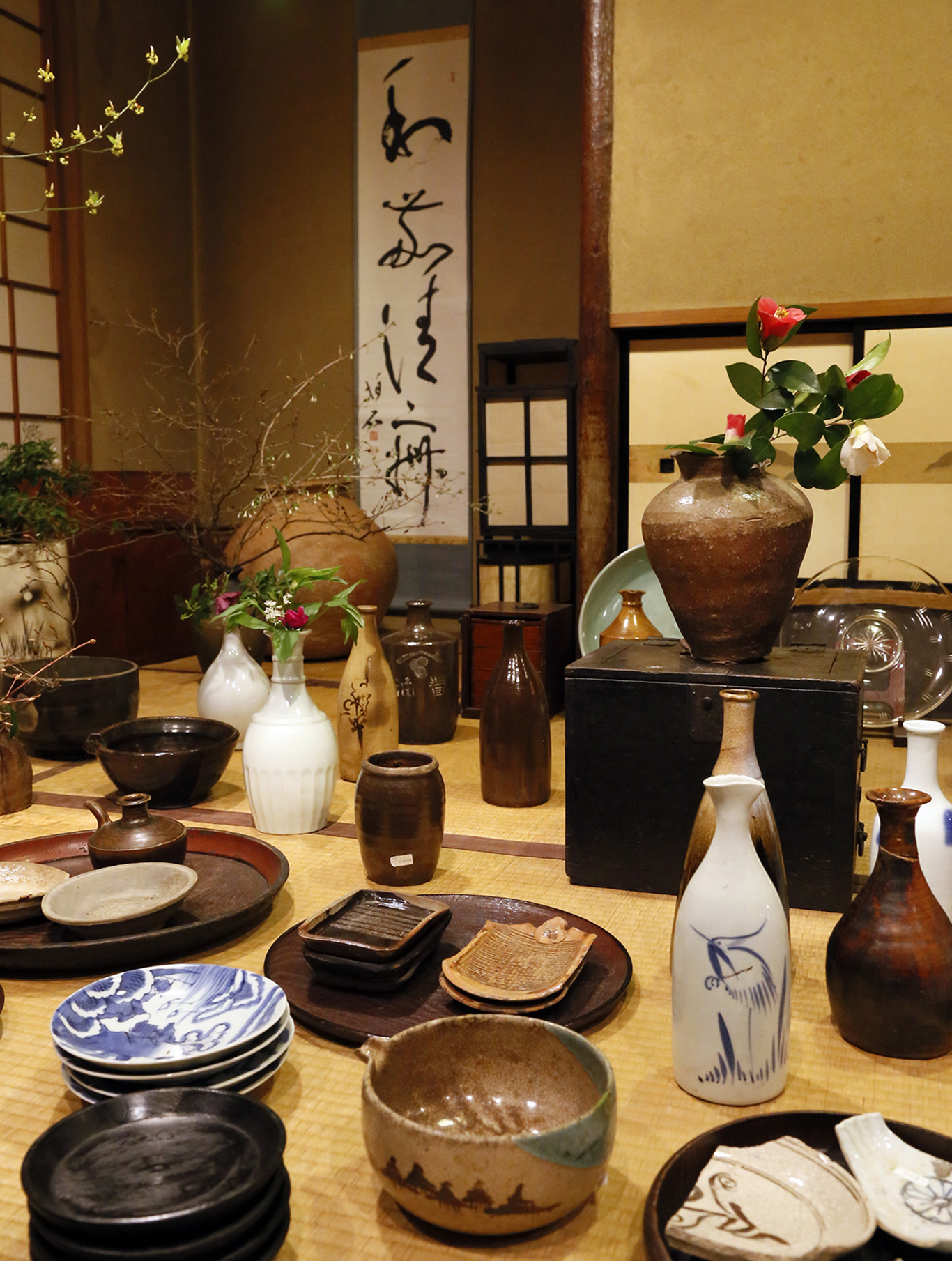
Although the number of antique lovers are increasing, Osamu says that it does not have to become a trend.
“When things becomes a trend, it becomes superficial. If only the keyword ‘antique’ gets picked up, the pieces itself will become less interesting. It becomes broad but shallow, and it won’t get deeper.”
Osamu mentioned that the one of the attractive points about antique is the “learning” part.
“It is okay that there are stores who think emotion is more important than the history. But not at my store. If you learn about the origin, you can understand more deeply about the piece. Studying and learning about antiques is very interesting.”
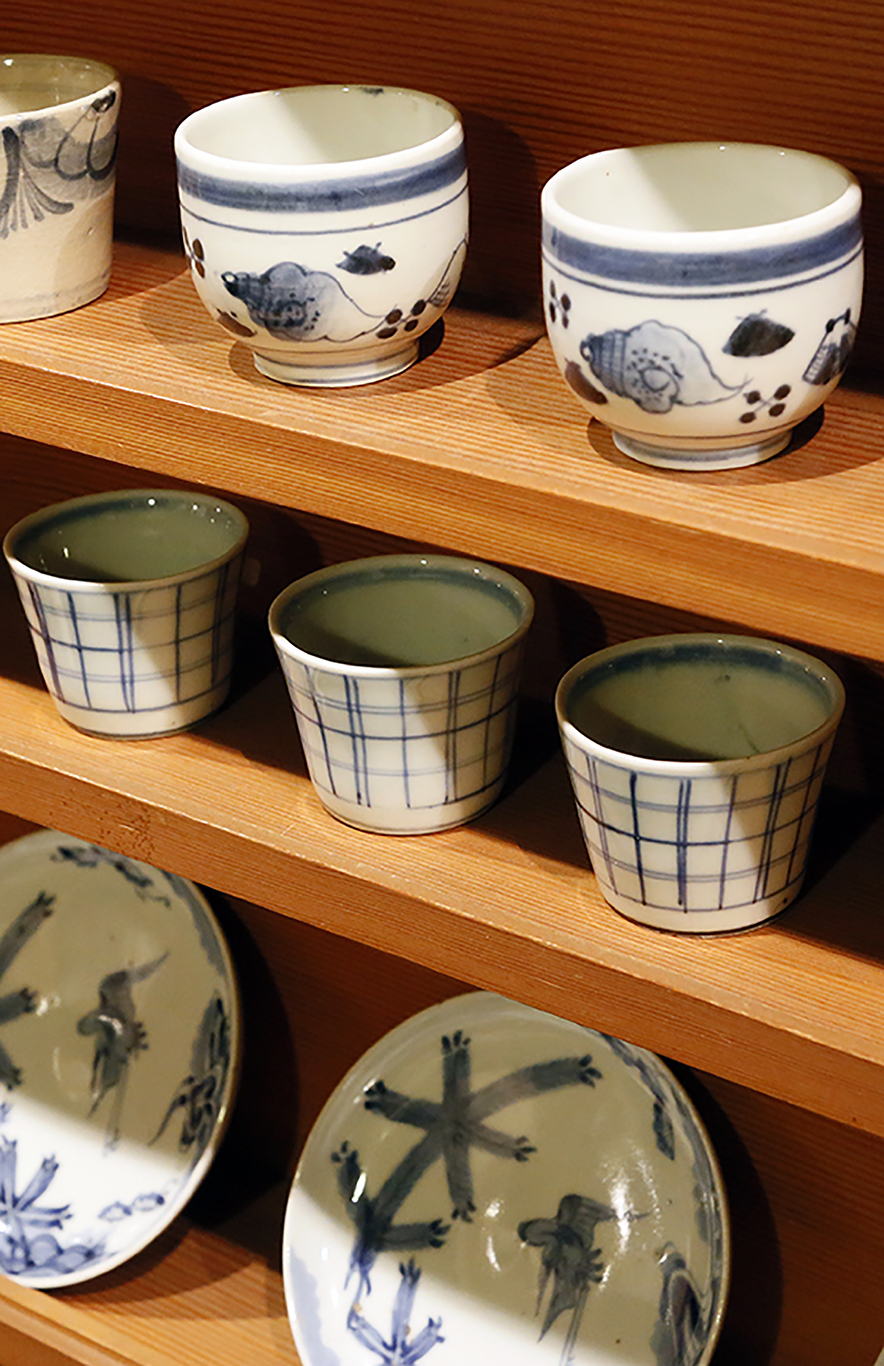
If you really want to understand about antiques, reading books is insufficient. He recommends to actually use the pieces.
“If you get a drinking vessel made in the Edo era, you will want to get great sake and finger food for it. Potato chips from the convenience store will not do. If you like the pattern on the drinking vessel, you will want to know more about the origin.”
Your favorite antique pieces will help you find a modern artist with the same taste.
“Antique helps to bring your life above ordinary.”
Osamu’s story will make you want to touch one by your hand – you should come and grab a coffee at Daikichi to start with.
